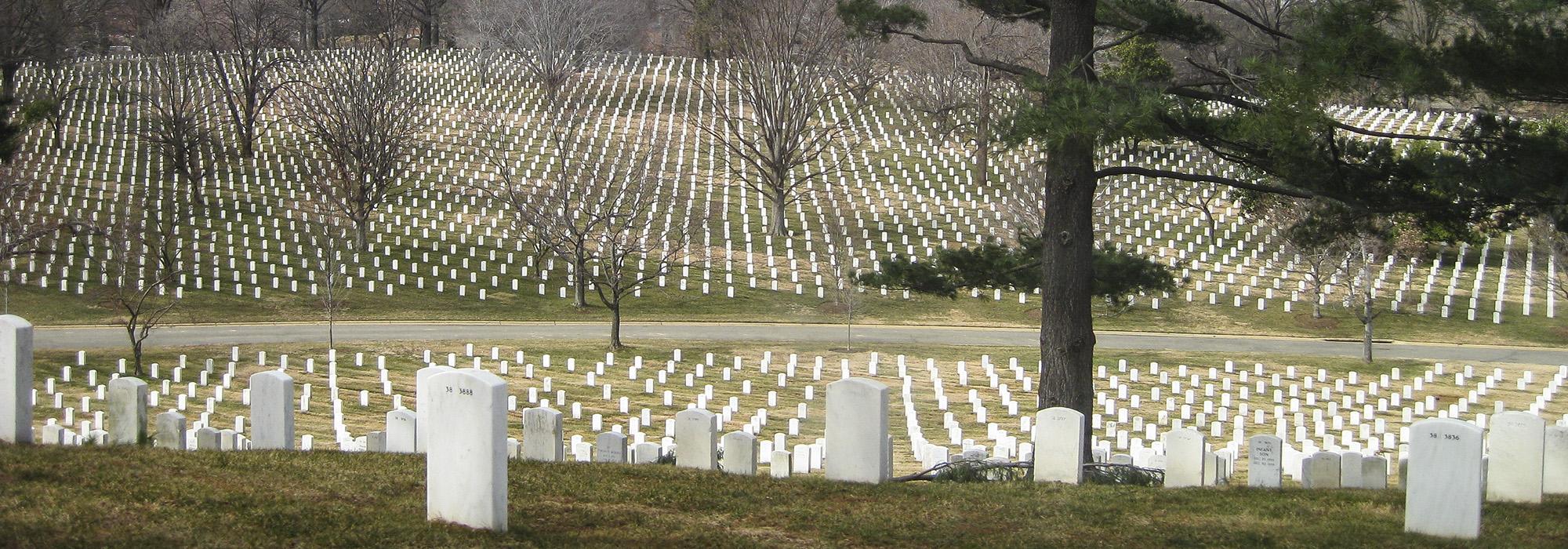Landscape Information
Originally Robert E. Lee’s Arlington House estate, Arlington National Cemetery received its first casualties in 1864. Already occupied by Union troops defending Washington, 200 acres of the estate’s rolling hills along the Potomac River were set aside as a military cemetery, to relieve area cemeteries filled to capacity with Civil War dead.
Under the direction of Brigadier General Montgomery Meigs, the property was surveyed and laid out, and by 1866 had over 15,000 burials. Despite receiving advice from Frederick Law Olmsted Sr., for a restrained, 'studiously simple' design, Meigs laid out the cemetery according to prevailing Victorian and Gilded Age style standards. A resulting forty-year accumulation of disparate gravestones, memorials, monuments and arches led the McMillan Commission to call for uniformity and professional design oversight in their 1901-1902 plan. “Nothing could be more impressive than rank after rank of white stones, inconspicuous in themselves, covering the gentle, wooded slopes and producing the desired effect of a vast army in its last resting place.” The plan also suggested the construction of a bridge connecting the Lincoln Memorial to Arlington House. McKim, Mead and White’s Neo-classical Memorial Bridge complex, symbolically linking the North and South, provides Arlington Cemetery with a grand entrance procession that culminates in a hemicycle with Lee’s mansion high above it. Today, the cemetery is administered by the Department of the Army and comprises 624 acres with over 300,000 internments.
















